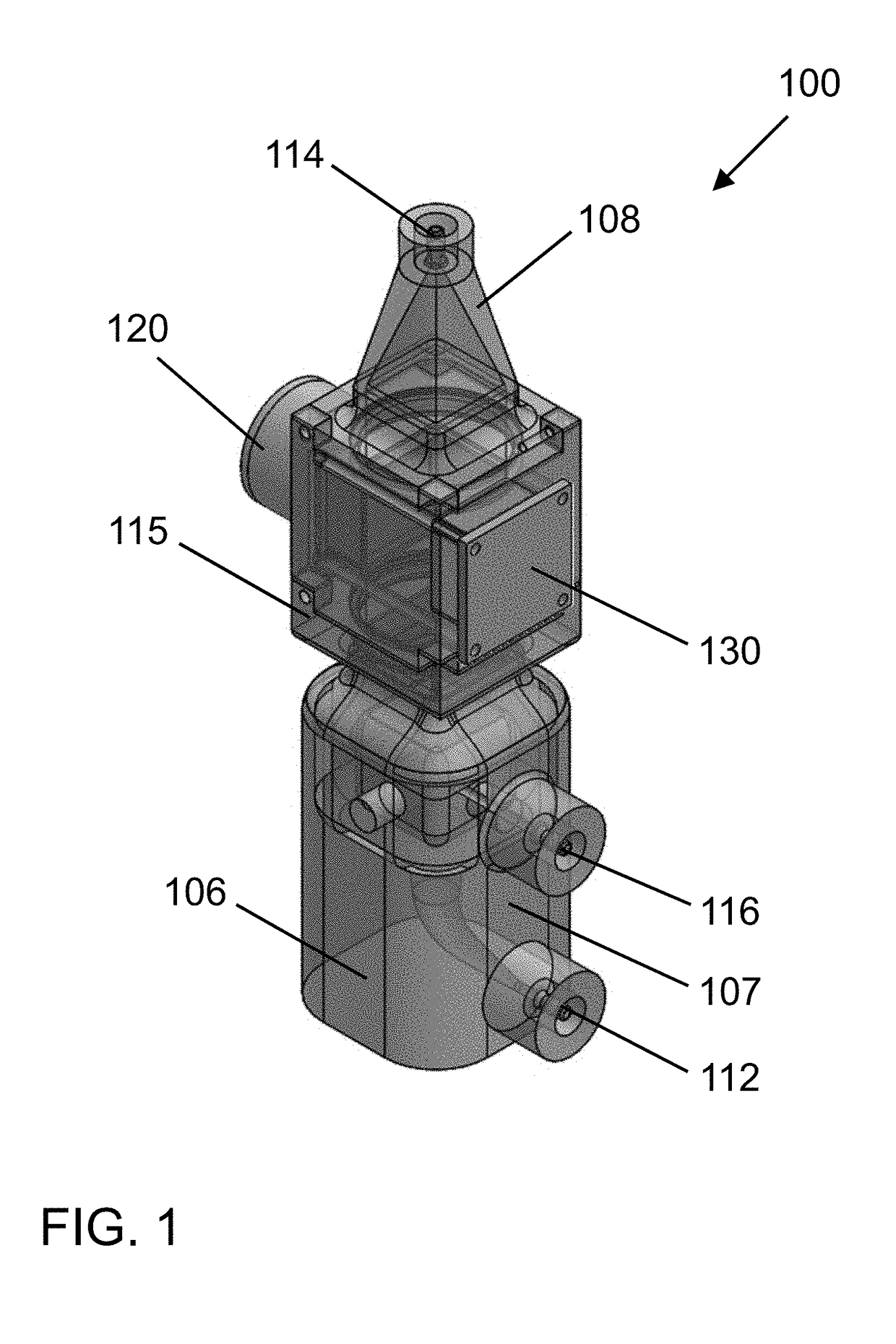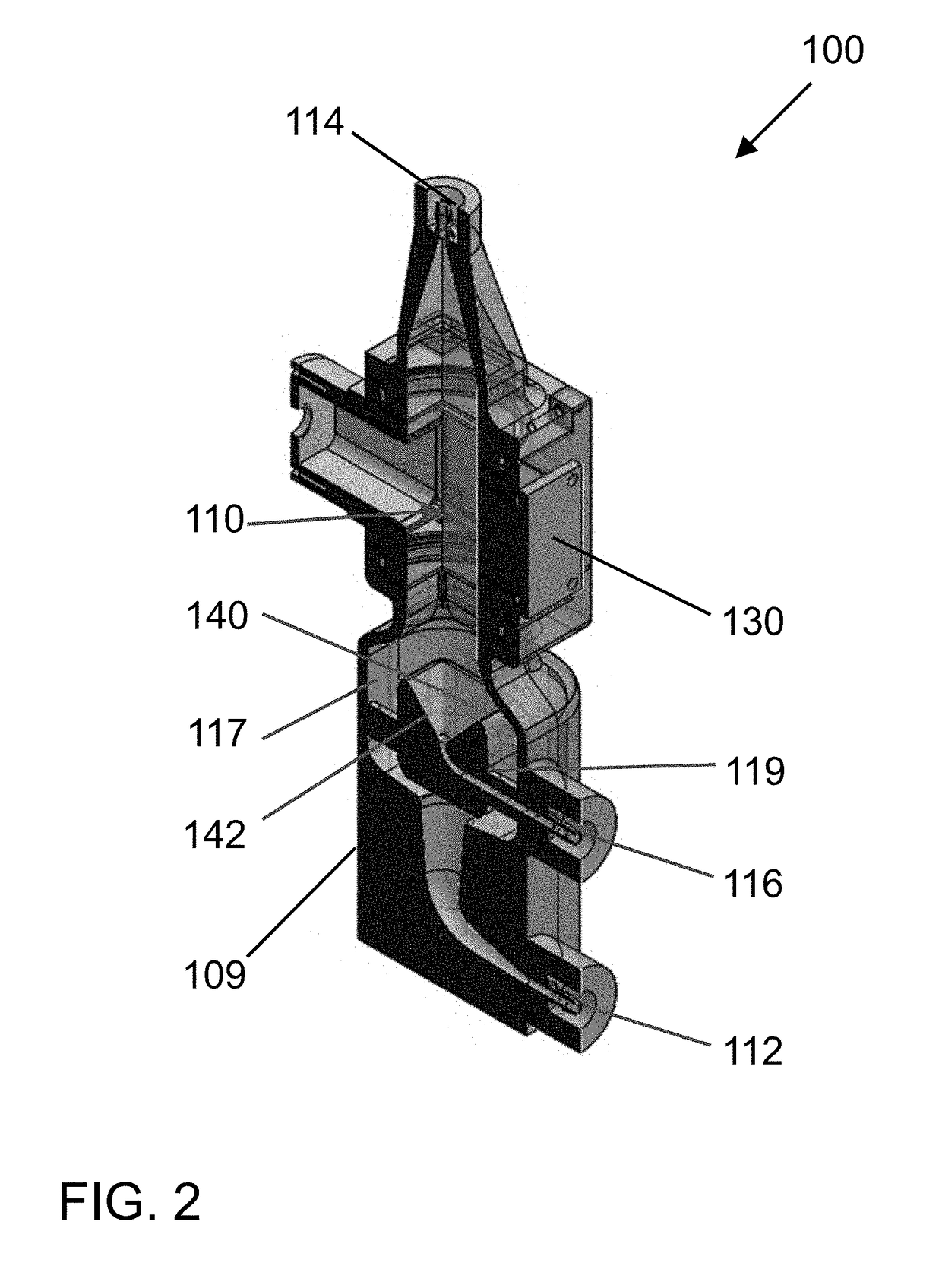System for generating high concentration factors for low cell density suspensions
a technology of concentration factor and low cell density, applied in the direction of mechanical vibration separation, separation process, instruments, etc., can solve the problems of reducing the efficiency of industrial processes, affecting the efficacy of therapeutic treatments, and many undesirable cells damaged or destroyed
- Summary
- Abstract
- Description
- Claims
- Application Information
AI Technical Summary
Benefits of technology
Problems solved by technology
Method used
Image
Examples
examples
[0107]In FIGS. 5-19, various studies were performed using device 100. In each of the studies, the mixture was a mixture of yeast cells and a host fluid, which serves as a good simulant for the concentration of biological cells.
[0108]For the study depicted in FIG. 5, a mixture having a TCD (total cell density) of 1.52=106 cells / mL and TCC (total cell count) of 1.37×109 cells was used. In total, three tests were run with 900 mL of mixture flowed through the device at a flow rate of 15 mL / minute and the ultrasonic transducer operated at a starting frequency of 2.182 MHz. For each test, the turbidity was measured in NTU (Nephelometric Turbidity Units) from the beginning of the test (time=0) to the end of the test (time=60 minutes) at intervals of five minutes. After testing, 900 mL of permeate (i.e., the host fluid and residual yeast cells) was recovered and had a TCD of 1.60×105 cells / mL and a TCC of 1.44×108 cells. For the concentrate (i.e., the recovered yeast cells), 4 mL was recove...
PUM
| Property | Measurement | Unit |
|---|---|---|
| feed volume | aaaaa | aaaaa |
| volume | aaaaa | aaaaa |
| volume | aaaaa | aaaaa |
Abstract
Description
Claims
Application Information
 Login to View More
Login to View More - R&D
- Intellectual Property
- Life Sciences
- Materials
- Tech Scout
- Unparalleled Data Quality
- Higher Quality Content
- 60% Fewer Hallucinations
Browse by: Latest US Patents, China's latest patents, Technical Efficacy Thesaurus, Application Domain, Technology Topic, Popular Technical Reports.
© 2025 PatSnap. All rights reserved.Legal|Privacy policy|Modern Slavery Act Transparency Statement|Sitemap|About US| Contact US: help@patsnap.com



